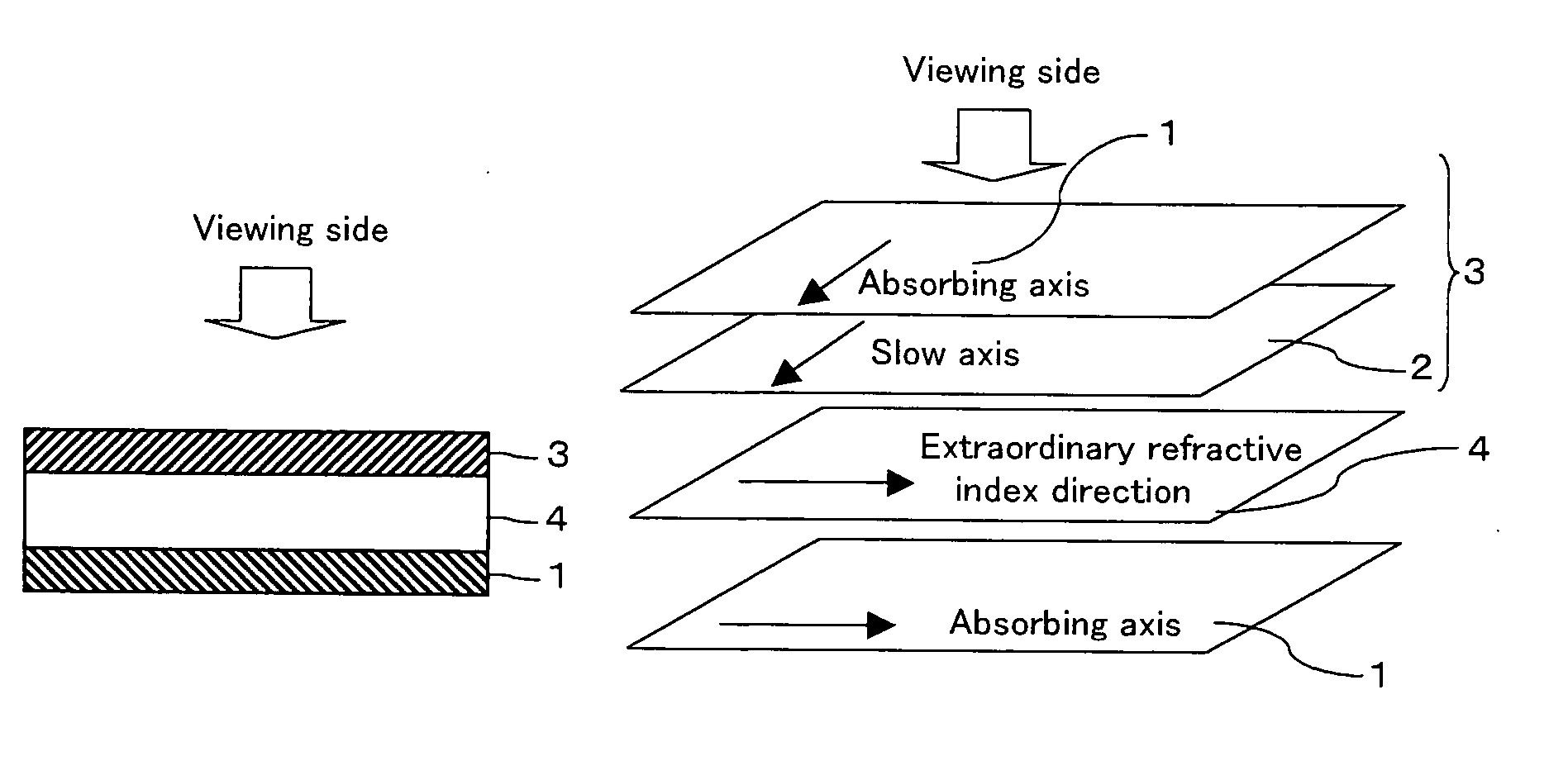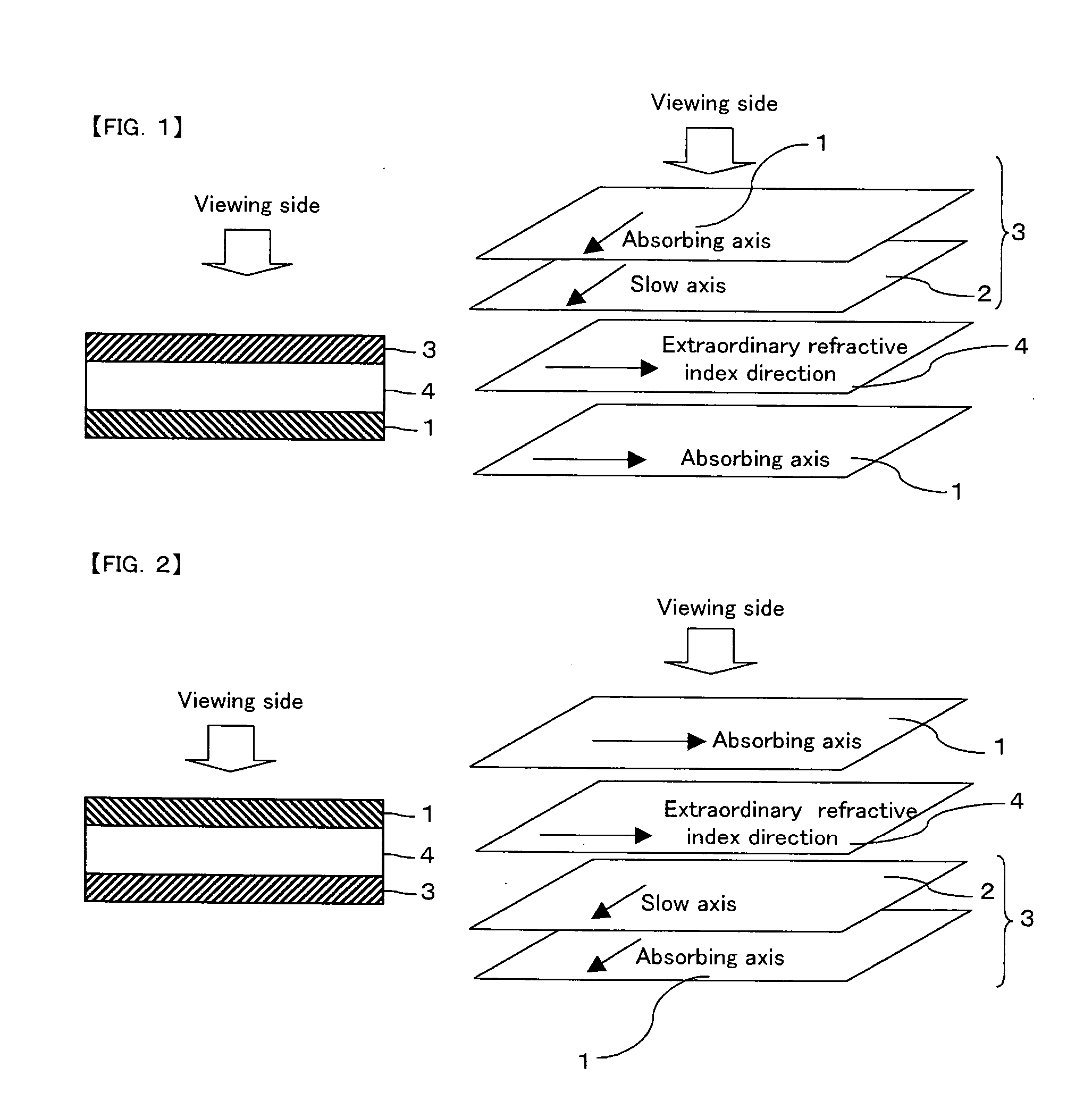Optical film, polarizing optical film, and image viewing display
- Summary
- Abstract
- Description
- Claims
- Application Information
AI Technical Summary
Benefits of technology
Problems solved by technology
Method used
Image
Examples
example 1
(Polymer Film)
As a polymer film including a polycarbonate resin and a styrene resin, PF film (thickness of 55 μm): a product name, manufactured by Kaneka Corp. was used. The polycarbonate resin includes a polymer originated in 2,2-bis(4-hydroxy phenyl)propane, and 1,1-bis(4-hydroxy phenyl)-3,3,5-trimethyl cyclohexane with a blending ratio of 40:60 (by weight ratio). Moreover, a content ratio of a styrene resin (weight average molecular weight 10,000) in the polymer film was 20% by weight.
Heat-shrinkable films, which are a biaxially stretched polyester film, were adhered on both sides of the polymer film (PF film) through pressure sensitive adhesive layers. Then, the obtained film was held with a simultaneous biaxial stretching machine, and stretched 1.3 times at 145° C. The obtained stretched film was transparent, and had a thickness of 60 μm, a front retardation of 140 nm, a thickness direction retardation of 70 nm, and an Nz coefficient of 0.5. Moreover, a pho...
example 2
Heat-shrinkable films, which are a biaxially stretched polyester film, were adhered on both sides of a polymer film (PF film) used in Example 1 through pressure sensitive adhesive layers. Then, the obtained film was held with a simultaneous biaxial stretching machine, and was stretched 1.1 times at 146° C. The obtained stretched film was transparent, and had a thickness of 61 μm, a front retardation of 130 nm, a thickness direction retardation of 39 nm, and an Nz coefficient of 0.3. Moreover, a photoelastic coefficient gave 5.0×10−11, and Tg 140° C.
PUM
| Property | Measurement | Unit |
|---|---|---|
| Glass transition temperature | aaaaa | aaaaa |
| Molecular weight | aaaaa | aaaaa |
| Refractive index | aaaaa | aaaaa |
Abstract
Description
Claims
Application Information
 Login to View More
Login to View More - Generate Ideas
- Intellectual Property
- Life Sciences
- Materials
- Tech Scout
- Unparalleled Data Quality
- Higher Quality Content
- 60% Fewer Hallucinations
Browse by: Latest US Patents, China's latest patents, Technical Efficacy Thesaurus, Application Domain, Technology Topic, Popular Technical Reports.
© 2025 PatSnap. All rights reserved.Legal|Privacy policy|Modern Slavery Act Transparency Statement|Sitemap|About US| Contact US: help@patsnap.com



